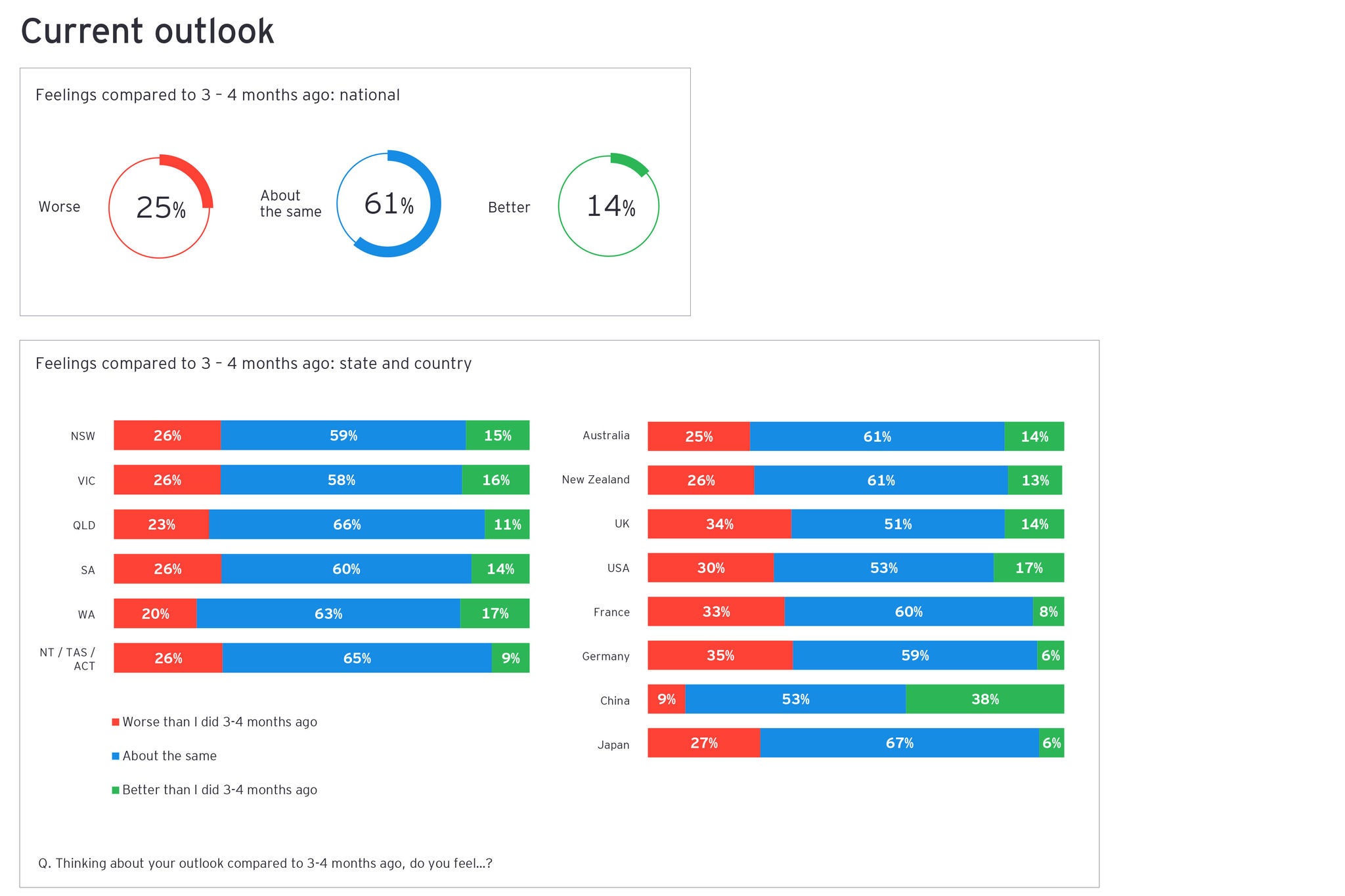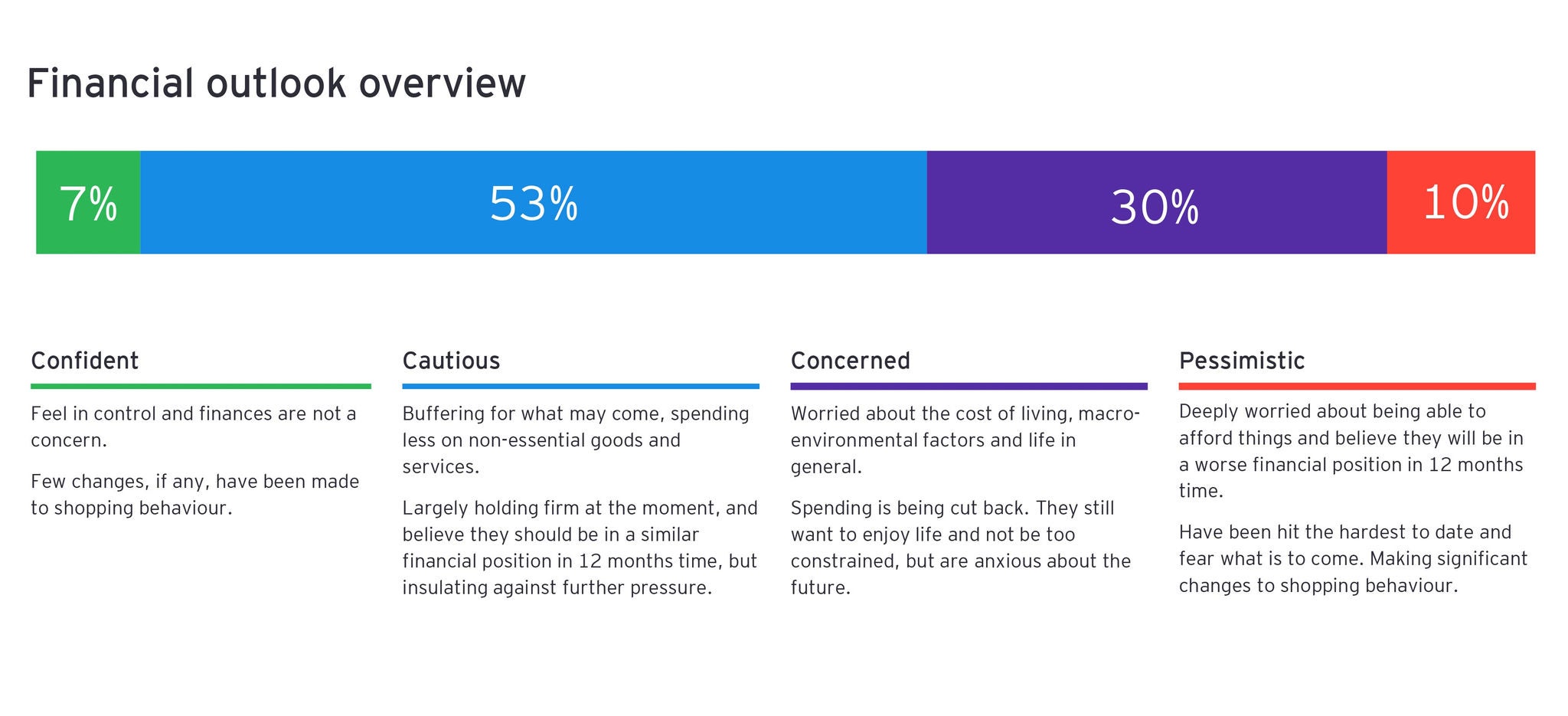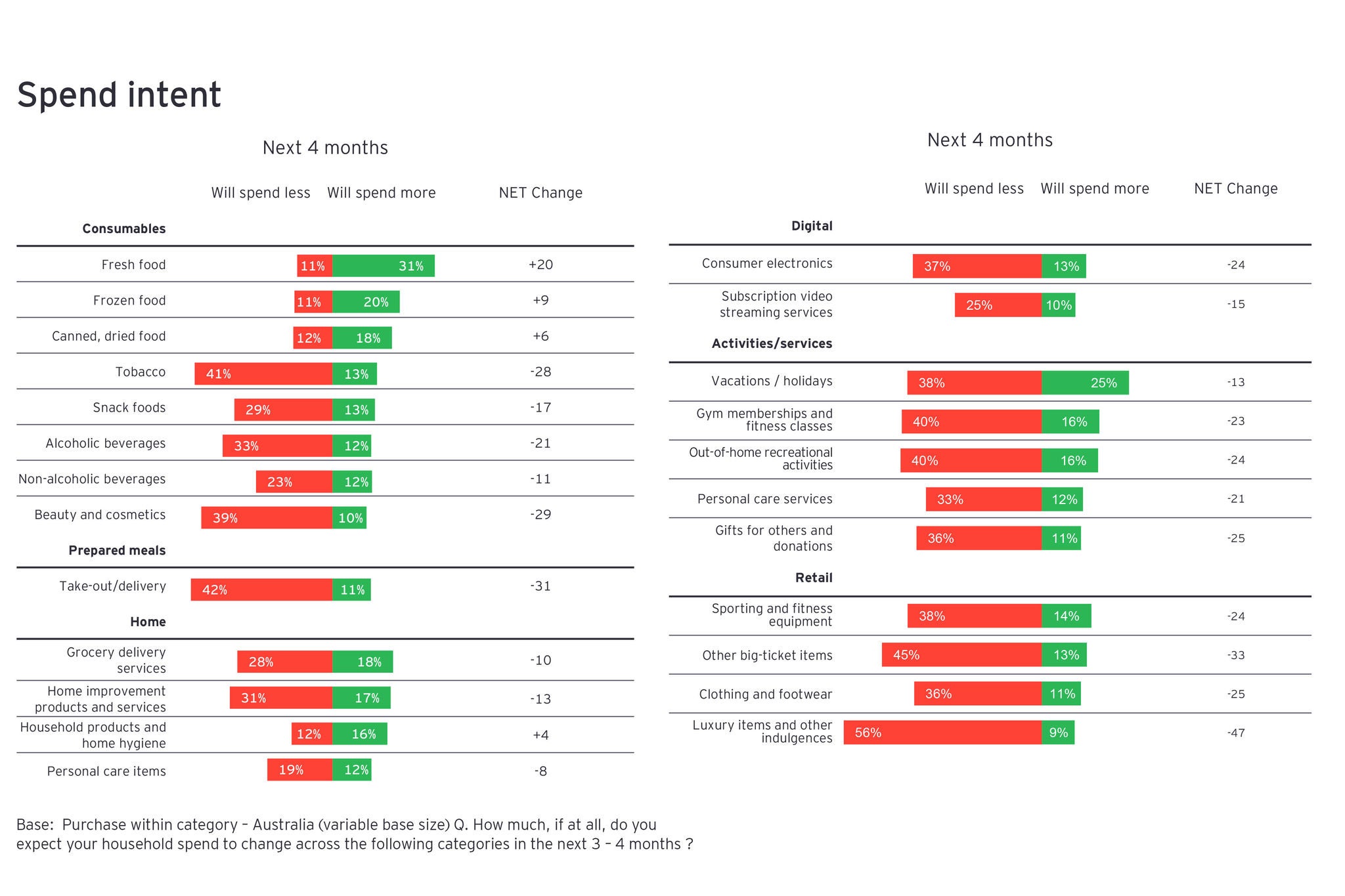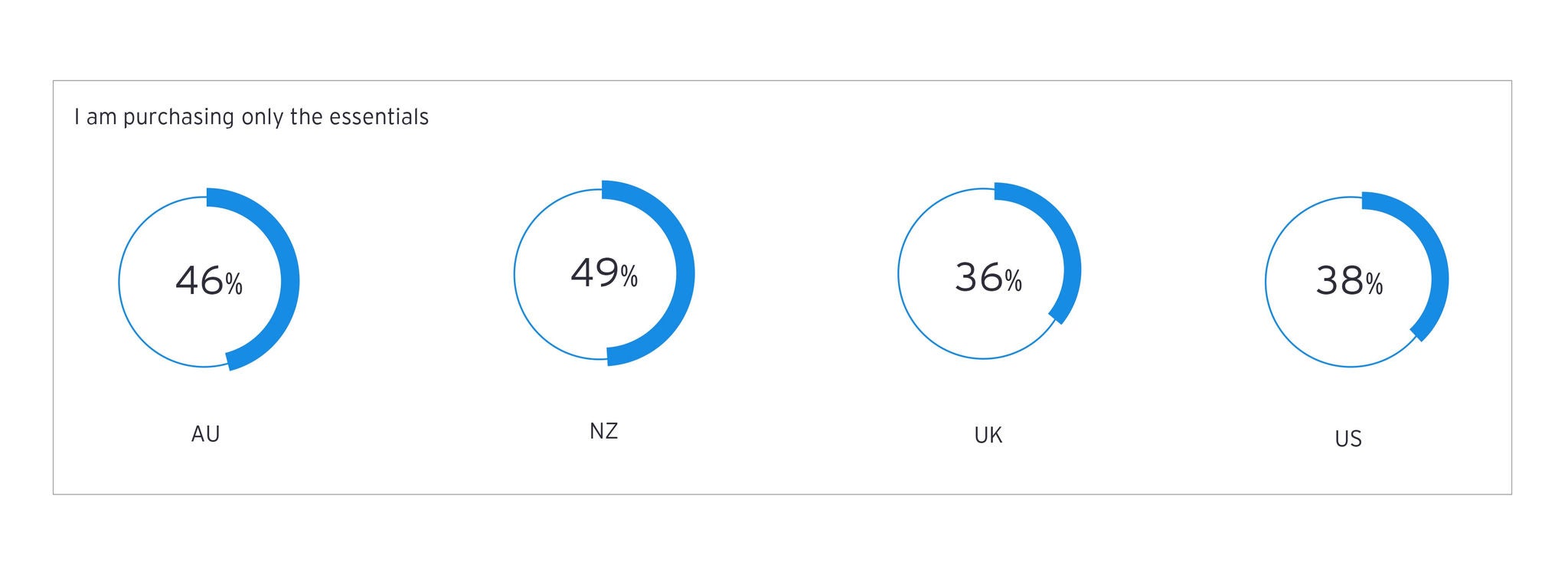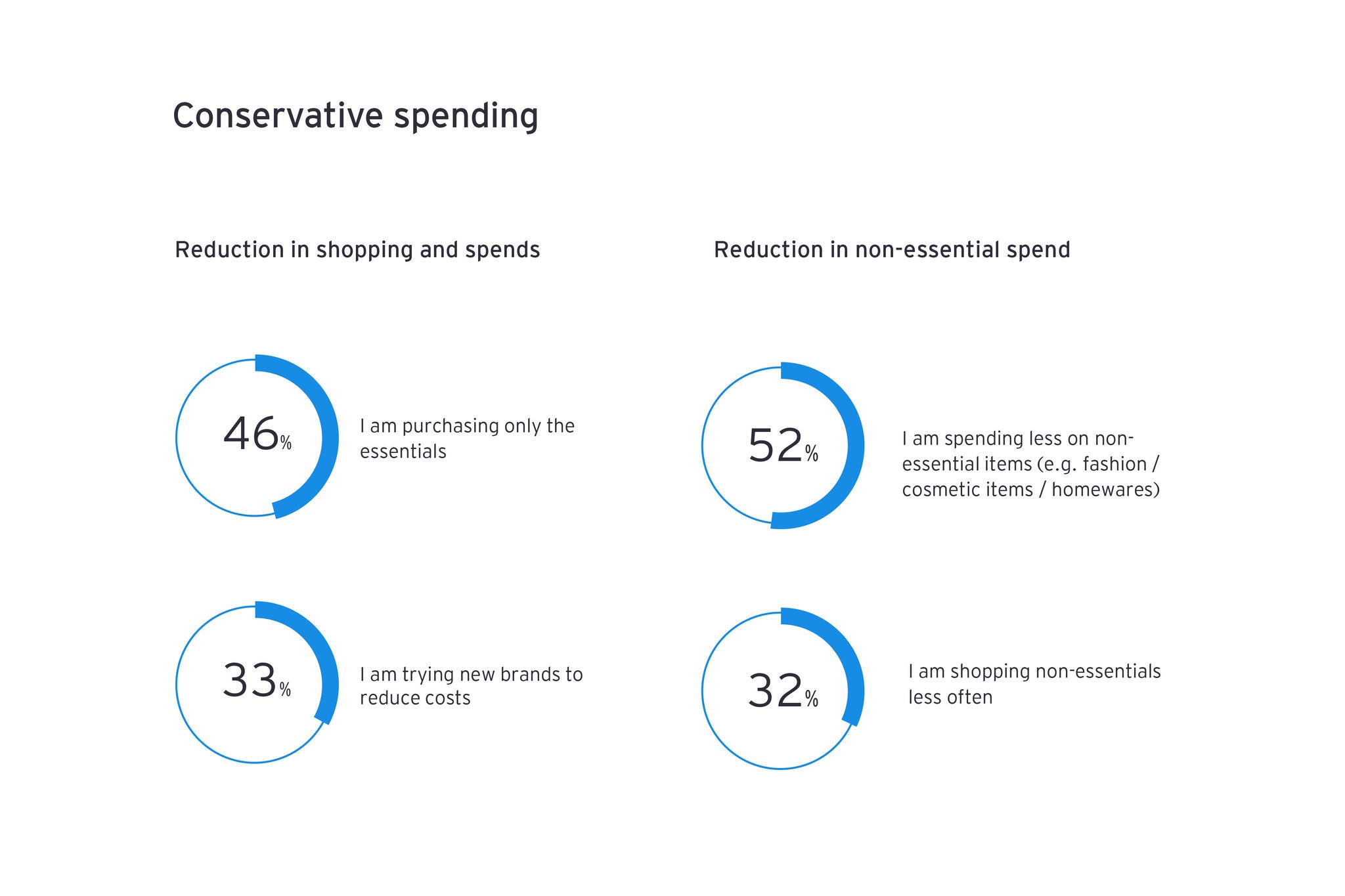EY refers to the global organisation, and may refer to one or more, of the member firms of Ernst & Young Global Limited, each of which is a separate legal entity. Ernst & Young Global Limited, a UK company limited by guarantee, does not provide services to clients.
How EY can help
-
EY’s Commercial Transformation offering can help your organization reignite growth while optimizing sales and marketing investments and returns, enabled by growth strategy, advanced commercial analytics and differentiated capability deployment.
Read more
Six steps for consumer-facing companies
As consumers buffer their households from economic uncertainty and constrain their spending, brands need to move quickly. Six imperatives need to be top of mind:
- Review the product portfolio and operations to deliver on affordability: As consumers are increasingly likely to trade down in a wide range of categories to get the products and services they want at the prices they can afford, there is an immediate need to optimise product portfolios. The areas in the spotlight include ranging, pack sizes, packaging materials and alternative ingredients. Importantly, while constraint will be a dominant driver in many categories, other categories will see an uplift as mass-market consumers look for accessible indulgences. Understanding the prevailing and emerging dynamics around consumer demand is critical in an environment characterised by instability.
- Evolve the current pricing strategy: The amount of flux in cost of products and services in the eyes of consumers has created a significant opportunity to review the pricing strategy to adapt to the new environment. Sophisticated and dynamic pricing strategies can deliver value to retail customers and end-consumers now, while also maintaining long-term brand value. Aligning with consumers’ need to save money without diluting brand equity is critical.
- Reinforce brand presence and empathy: As consumers consider other options, brands need to stay top of mind, reinforcing their values and connection with loyal shoppers. Brand familiarity and engagement in a time of uncertainty are powerful, and brands that show empathy and connect with their customers will build loyalty. Unilever understands this, and boosted its marketing budget by USD$200 million for the first half of this year to keep higher priced brands in the mind of consumers
- Align with customer values: The emotional impact and deep introspection provoked by the pandemic have sharpened consumers’ focus on ‘what matters most’. Even at a time of heightened and sustained price sensitivity, consumers are not willing to abandon the values they have embraced through the pandemic. At the top of the list is sustainability – economic, social and environmental. It’s imperative to be recognised as ‘doing the right thing’, balancing purpose and profit, as consumers are now taking a harder line in scrutinising sustainability claims and the social contract.
- Model to manage risk: Consumer-facing organisations with subscription and contracted products and services, like mobile phones and streaming services, need to model the risk around slower repayments or default, alongside the impact of attrition as consumers more assertively manage discretionary spend.
- Ready for the rebound: While the economic conditions cast a pall over coming months and the recovery will be slower than the decline, the return of consumer confidence will be amplified by the deprivation and constraint experienced over an extraordinary few years. Alongside the immediate need to adapt to the conditions, brands must think future-back and plan for the second half of the decade when there is likely to be a more spendthrift and indulgent consumer.




